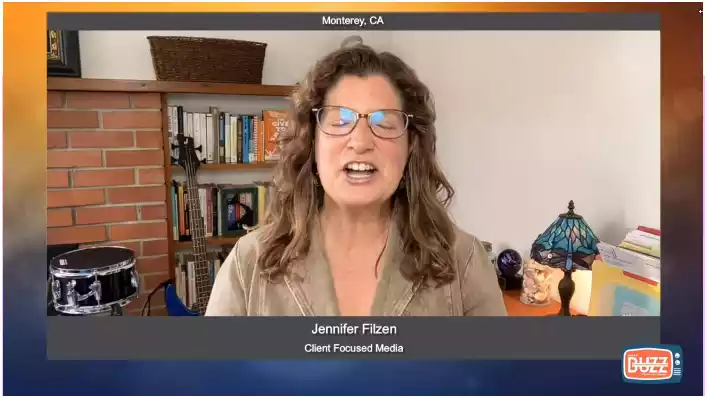Understanding Prior Authorization Timelines: Challenges and Solutions
Curious about the future of healthcare? Discover how the next big shift is going virtual and how prior authorization timelines play a crucial role. Dive in to learn more!

Understanding medical prior authorization is crucial for both patients and healthcare providers. This process requires healthcare providers to obtain approval from insurance companies before delivering specific medical services, procedures, or medications. The goal is to ensure that the prescribed treatment is medically necessary and covered under the patient’s insurance plan. While this process can help manage healthcare costs, it often involves navigating complex documentation and can lead to delays in receiving care. By understanding how medical prior authorization works and ensuring all required information is provided upfront, patients and providers can minimize delays and improve the overall efficiency of care delivery.
Learn More Here
Table of Contents
Understanding Prior Authorization Timelines for Faster Approvals

Successfully navigating these obstacles demands understanding the PA process from healthcare providers and implementing strategies to manage it proficiently. The significance of authorization must be balanced. It serves as a tool for balancing cost control with quality of care. Nonetheless, the time-intensive nature of the PA process can unintentionally result in treatment delays, underscoring the importance of streamlining procedures to uphold patient care standards.
The Effects of Delayed Prior Authorization on Healthcare Providers and Patient Care
When prior authorization is delayed, it can impact both healthcare providers and patients. For providers, prolonged authorization processes disrupt the flow of work. Add to administrative tasks taking away precious time that could be spent on patient care. The increasing paperwork, phone calls, and follow-ups reduce the efficiency of healthcare practices, causing a bottleneck that strains resources. From the patient’s point of view, delays in authorization can result in postponed treatments and unnecessary anxiety. In situations where urgent care is needed, waiting for authorization can worsen health conditions, potentially leading to consequences. Occasionally, patients might decide to forgo recommended treatments due to the inconvenience and uncertainty caused by delays in authorization, negatively impacting their health and well-being.
Moreover, the financial consequences of delayed authorizations should be considered. For healthcare providers, pending authorizations can lead to delayed payments and a higher likelihood of claim denials. These issues affect a practice’s stability and jeopardize patient satisfaction and trust in the healthcare system. It is crucial to tackle these challenges to enhance provider efficiency and patient care quality.
Factors Influencing Prior Authorization Processing Times
Several factors play a role in determining the varying timelines associated with authorizations. Understanding these factors can assist healthcare professionals in identifying obstacles and creating strategies to address them. One significant cause of authorization delays is the inconsistency in criteria among insurance providers. Each insurer may have requirements and documentation standards, leading to confusion and inefficiencies during approval.
Another factor impacting the timing of authorizations is the complexity of requested services. Procedures that are cost-effective or considered often necessitate detailed documentation and justification, resulting in longer review times. Healthcare providers must be ready to provide evidence to support their authorization requests, which can be labor-intensive and time-consuming.
Moreover, the manual processes involved in authorization procedures can cause substantial delays. Relying on paper forms, faxes, and phone communications introduces inefficiencies and communication challenges between healthcare providers and insurers. These outdated methods impede the speed and accuracy of authorization approvals, underscoring the importance of modernization and automation in managing these processes.
Effective Strategies for Improving Prior Authorization Efficiency

Having all the necessary documents available helps providers speed up the process and minimize follow-up needs. Templates and checklists can assist in compiling information efficiently, reducing submission errors. Assigning a team or individual to manage authorizations can enhance operational efficiency. This team can focus on tracking authorization requests, communicating with insurers, and resolving any discrepancies or issues that may arise. Centralizing PA responsibilities can lead to smoother workflows and quicker resolution of obstacles, ultimately enhancing the patient care experience.
Technology Solutions for Improving Prior Authorization Timelines
Utilizing technology is critical to improving authorization timelines. Integrating health records (EHRs). Digital platforms allow healthcare providers to automate parts of the PA process, decreasing reliance on manual methods and expediting approvals. Electronic prior authorization (ePA) systems enable real-time request submission and tracking, promoting communication between providers and insurers. Healthcare providers often use tools to help decide if a service needs approval, which helps cut down on requests and makes the process more efficient. Moving towards options can improve transparency and responsibility in the authorization (PA) process. Automated notifications ensure that follow-ups happen on time, and data analytics provide insights into authorization trends, helping providers make choices and boost efficiency.
I'm very thankful for Portiva who I know is looking after my practice while I'm gone the virtual assistants can manage prescription refills, documents they can triage patients and just kind of answer administrative questions and they can handle a lot on their own. But also, they're very good about contacting me if there's any emergency or anything I need to attend to. So I'm very thankful for Portiva they can help almost any provider almost anywhere and it really allows for some good work-life balance as I'm getting to experience right now at my family farm so I'm very thankful for Portiva and I'm very happy to use their services"

Board Certified Family Medicine Physician

Portiva's Virtual Medical Assistant - I have all the support I need. There's somebody checking my email, any patient messages. Patients are still able to schedule and handle any scheduling issues and any kind of billing that needs to still go through. Portiva hands handles it all for me. I have support i have somebody that I can access 24/7 pretty much. It's all very seamless. If somebody has an emergency or needs a medication called in. I know that the va's at portiva will handle that for me.

Board Certified Family Medicine Physician

Case Studies on Overcoming Prior Authorization Challenges

Another success story is from a hospital system that adopted a prior authorization platform. This system integrates smoothly with their existing health records (EHR), making submissions easier in real-time and cutting down on paperwork. As a result, the hospital saw a 25% decrease in authorization processing times and fewer claim denials. These examples illustrate the advantages of following practices and integrating technology solutions in prior authorization processes. By studying these instances, healthcare professionals can make informed choices regarding their prior authorization procedures, ultimately enhancing operational efficiency and patient care results.
Looking Ahead to the Future of Prior Authorization Timelines
As the healthcare field continues to progress, so will authorization-related procedures. One advancement is the increased use of electronic systems for prior authorization, which has the potential to transform how PA is handled. By improving communication between providers and insurers, these systems can significantly reduce approval times and enhance effectiveness. Moreover, there is a growing push toward authorization procedures, with key players in the industry advocating for more uniformity and clarity in requirements. By aligning payer demands and simplifying the submission process, healthcare providers can quickly meet authorization criteria, minimizing delays and improving patient care.
In conclusion
In essence, comprehending and optimizing timelines for authorizations are essential for healthcare providers striving to deliver efficient care. By understanding the reasons behind delays in processing authorizations and utilizing strategies and technological solutions, healthcare providers can streamline their procedures and boost patient satisfaction. Providers must stay abreast of the trends and advancements in prior authorization processes in an evolving healthcare landscape. Taking a stance. Using existing tools can help healthcare institutions overcome challenges associated with prior authorizations and enhance patient outcomes. Various resources and assistance are available for providers seeking to improve their authorization workflows. By collaborating with industry professionals and exploring cutting-edge technologies, healthcare organizations can ensure they lead the way in managing authorizations, benefiting their patients and practices.
To learn more about prior auth delays that can enhance your medical practice. Discover more about Portiva and unlock a world of possibilities by visiting our homepage today!
- Optimizing prior authorization
- Collaborative prior authorization
- Prior authorization trends
- Prior authorization and patient experience
- Impact of prior authorization policies
- Advanced analytics in prior authorization
- Ensuring compliance in healthcare prior authorization
- International approaches to prior authorization processes
- Global best practices for streamlined healthcare delivery
- Comprehensive guide to reviewing and updating your prior authorization policies
- Customized strategies for prior authorization
- Revising prior authorization policies for better patient outcomes
- Multidisciplinary methods to simplify prior authorization
- Revealing prior authorization costs
- Trends in prior authorization technology
- Collaborative solutions in prior authorization
- Prior authorization for providers
- Automating prior authorization
- Integrating prior authorization systems

